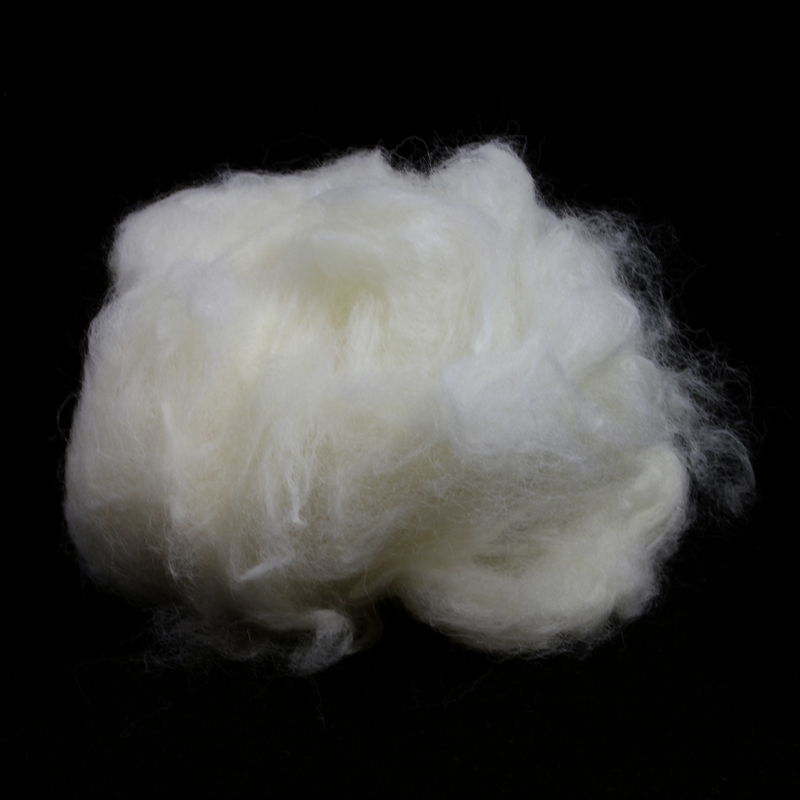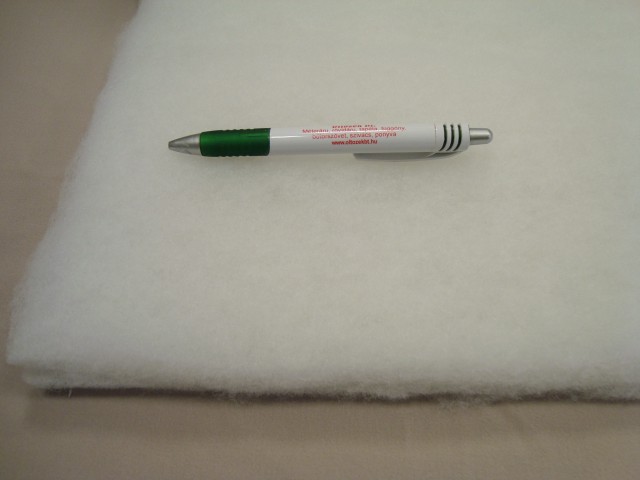It's not about what frequencies are absorbed, but more about the gas flow resistivity (GFR) of the fill medium. When you put fill in the box, the driver has to 'work' harder to push the air through the fill medium on the inward half of the driver's cycle and work harder to pull the air out of the medium on the outward half of the cycle. This has the same effect as having a larger box with more air to compress.
Not all fill media have the same GFR. GFR depends on several factors including one called tortuosity. This factor is basically the length of the path that the gas molecules have to travel through the fill medium. The higher the tortuosity, the lower the GFR, and the harder the driver has to work to get the air through the fill.
High density polyester batting—which is very different than 'pillow stuffing'—will yield very different results. In a ported box where the 'pillow stuffing' may lower the resonant frequency by maybe 1.5 Hz - 2 Hz, the higher density poly batting may lower that by 3 Hz - 4 Hz depending on the amount used.
Open-cell Polyether foam will have different characteristics than that of all polyester fills and can give you a very wide choice of fill media from which to choose. These types of foams can be very lightweight with a very low tortuosity that will have minimum effect on your box tuning. Other types of polyether foam can be very dense with a very small open-cell structure and can provide a much higher tortuosity and GFR per unit volume. These types will allow you to use less fill and still achieve the same effect.
Open-cell melamine foam is another type of foam that can be used as it has the smallest cell size, greatest tortuosity, and highest GFR of all open-cell foams. It's lightweight and easy to work requiring only a cheap kitchen knife to cut. While you can obtain small quantities from the local supermarket—Mr. Kleen Magic Eraser—larger quantities can be very expensive.
Whatever fill media you choose, the important thing to keep in mind is to not overfill the box. Doing so will lower the efficiency of the system and can severely reduce the output. In a ported system you know when you have used enough when the resonant frequency doesn't go any lower when you add more fill. A sealed system is a bit trickier as you have to test a bit more carefully to see where the output starts to drop ever so slightly as you add more fill.
Some of the above materials can be purchased online. However, if you have an upholstery shop nearby, they might carry—or can order—various types of polyester fill and batting that you can try out. Polyether foam can be ordered online, but the pricing is usually ridiculous and you can't really tell what you're getting until it arrives. Melamine—as mentioned earlier—is quite a bit more expensive if you need a large quantity, but its quality is generally very consistent from various vendors.


